10. Piazza dei Signori (Lords' Square)
The central hub of the city is Piazza dei Signori, the main square in Treviso, characterised by elegant arcades and by lovely restaurants and bars with their terraces. Already during the Roman period, this square was the cultural and social centre of the city, as well as during the Middle Ages, period to which the three main buildings that dominate the square, which are the most important monuments in Treviso, date back: Palazzo del Podestà, the Civic Tower and Palazzo dei Trecento. The main street of the city, via Calmaggiore (called Cardo Maggiore during the Roman period), an elegant alleyway with many shops and historical residences, connects Piazza dei Signori to the Treviso Cathedral.

9. Loggia dei Cavalieri
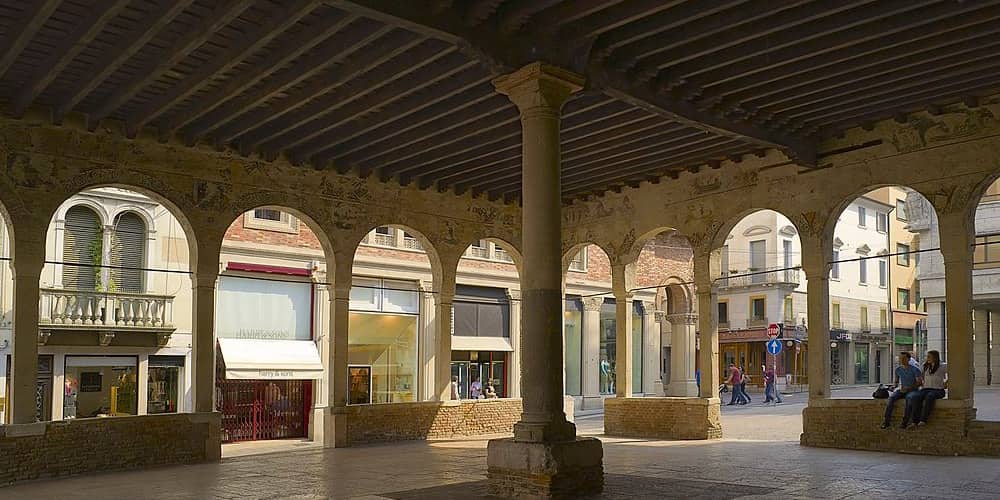
Not far from Piazza dei Signori, at the intersection of Via Indipendenza and Via Martiri della Libertà, we find the Loggia dei Cavalieri. This arched building in Romanesque style was built in 1276 as a place for meetings, talks and games for the nobles and above all as a symbol of the political power assumed by the nobility during the Communal period. It is assumed that the Loggia stands on the exact spot where the forum of the ancient Tarvisium was located during the Roman period.
8. Fontana delle Tette (Fountain of Tits)
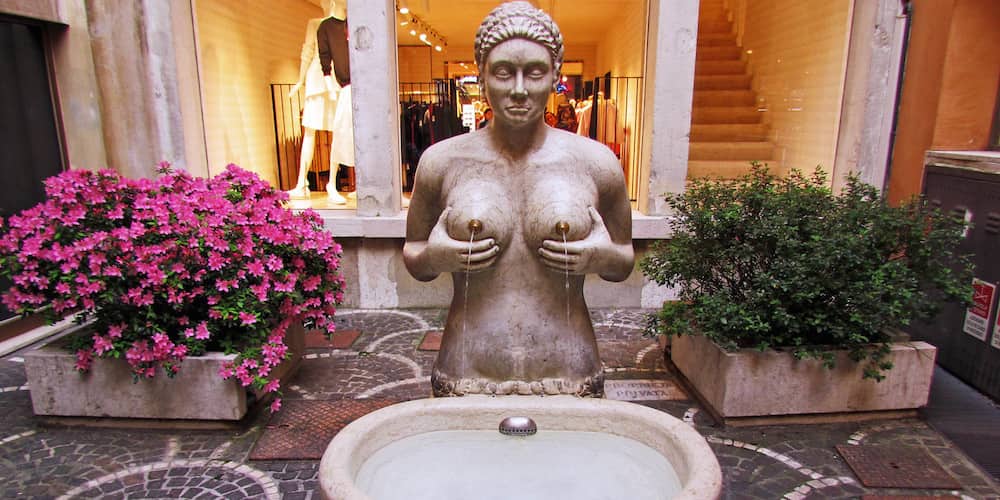
If you walk along Via Calmaggiore, turning down one of its side streets, the narrow Calle del Podestà, you will find yourself in a hidden courtyard, the courtyard of Palazzo Zignoli, inside which there is a reconstruction of the famous Fontana delle Tette. The original fountain dates back to 1559 and is now preserved in a display case inside the portico of the Palazzo dei Trecento. The fountain, in the shape of a topless woman from whose breasts water flows, during the Venetian rule poured white wine from one breast and red wine from the other one on the occasion of the designation of each new Podestà (it was the name given to the holder of the highest civil office in the government of a city during the Late Middle Ages), and for three days citizens could drink free of charge from the fountain. It is said that touching both breasts brings good luck, so why not give it a try?
7. Ponte San Francesco e Ponte Dante (San Francesco Bridge and Dante Bridge)
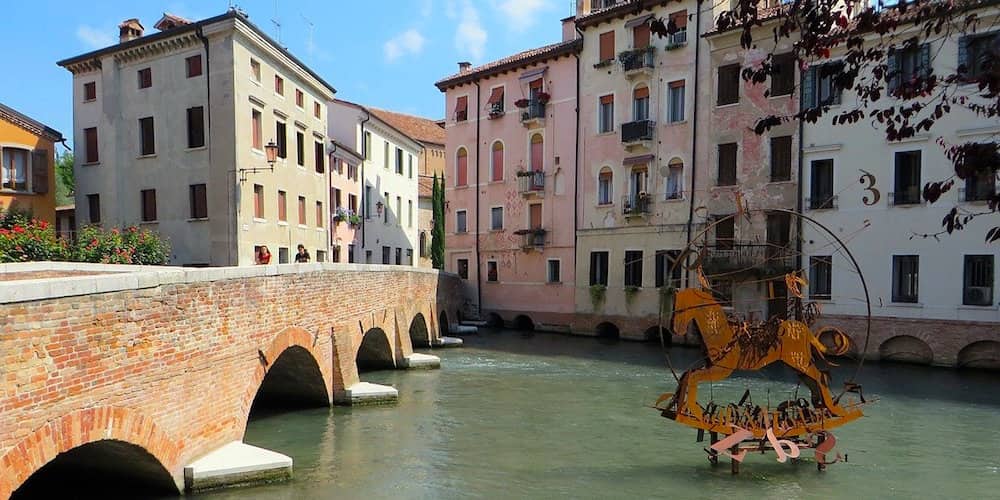
Treviso, being a city rich in waterways, is characterised by the presence of numerous bridges. From Ponte San Francesco, located over the Cagnan near the church of San Francesco, you can admire one of the most beautiful views of the city; on one side a still active watermill and on the other the weeping willows leaning over the canal. A unique panorama. Another important bridge in the city is undoubtedly the Ponte Dante, dedicated to the famous poet who mentioned this place in a verse of the Paradiso of his Divine Comedy, that is located on the point where the river Cagnan flows into the Sile, creating a truly suggestive view.
6. Treviso Cathedral
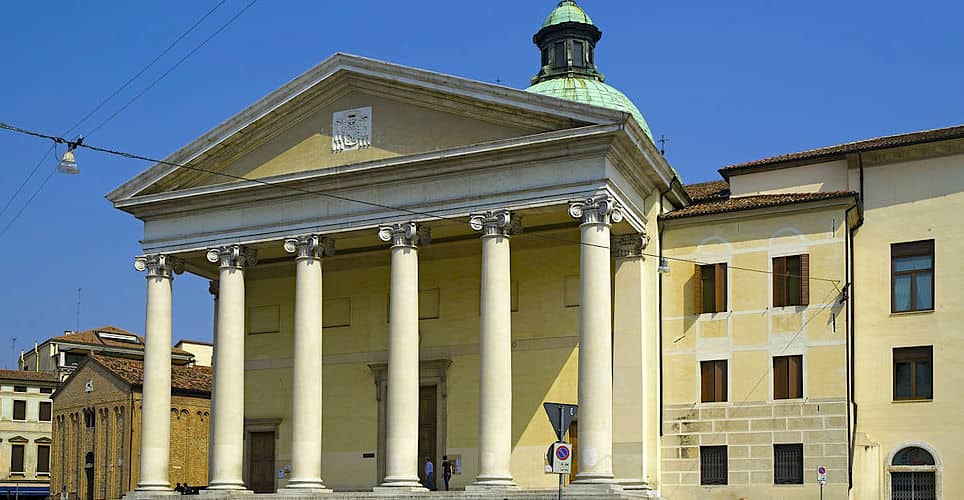
Walking all the way down via Calmaggiore we reach Piazza del Duomo, dominated by the Cathedral of Saint Peter, better known as "il duomo" in Italian, the city's main place of worship. The cathedral has very ancient origins, dating back to the 6th century, but over time it underwent various restorations and its current appearance dates back to the reconstruction, in Neoclassical style, completed in 1782. The Neoclassical façade, built in the first half of the 19th century, consists of a grand staircase crowned by an imposing pronaos with six Ionic columns, and at the sides of the staircase there are the two lion-shaped statues that held up the prothyrum of the ancient Romanesque building.
5. Church of San Francesco
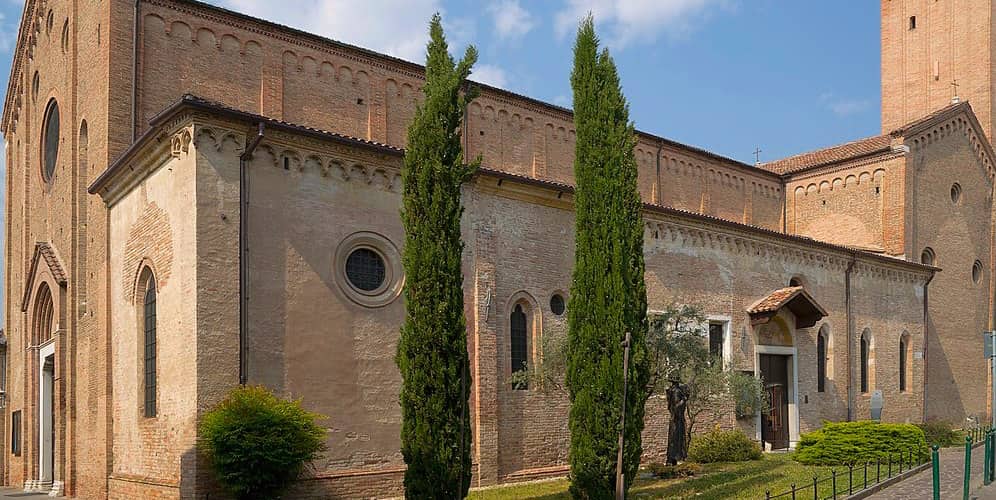
Another church worth visiting, although less present on the most common itineraries, is the beautiful Church of San Francesco, annexed to the convent of the same name. Built in the 13th century, it was suppressed by Napoleon during the French occupation and used as a stable and a weapons warehouse before being returned to the Franciscan community in 1928. Outside the church, among the trees, a splendid bronze statue of Saint Francis welcomes the visitors. The building, built in Romanesque-Gothic style, has a very simple appearance, but inside there are various works of art and the tombs of Pietro Alighieri and Francesca Petrarca, the children of Dante Alighieri and Francesco Petrarca, respectively.
4. Isola della Pescheria (Fish market island)
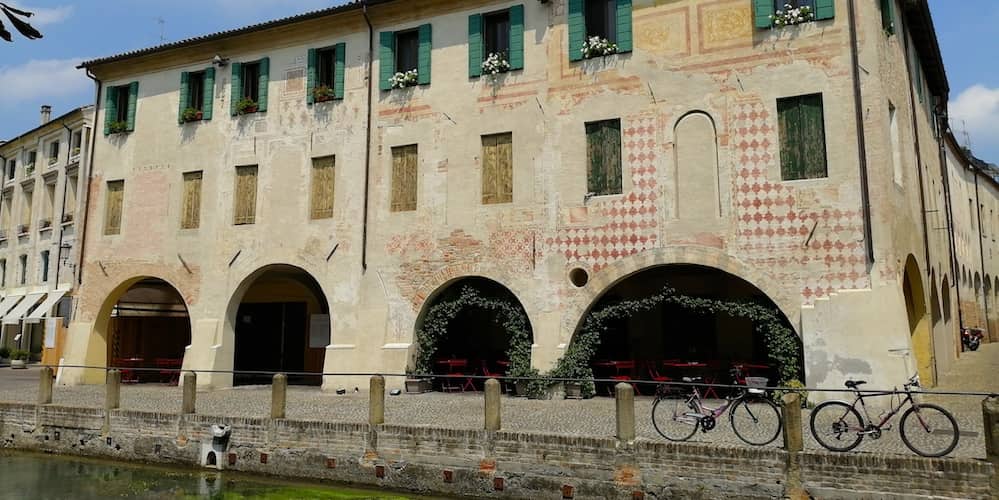
One of the most characteristic places in the city is the Isola della Pescheria, a small river island in the Cagnan Grando that is connected to the mainland by two bridges. The islet is located right in the centre of Treviso and hosts, as its name suggests (Pescheria means fish market), the city's fish market, every morning from Tuesday to Saturday.
3. Canale dei Buranelli

The Canale dei Buranelli area is enchanting. Located not far from the Pescheria, the canal is a branch of the river Botteniga, which in this area is called "Canale dei Buranelli" due to the presence of a building, dating back to 1500, that belonged to a family of fish traders from Burano. The view created by the houses sticking out over the river is one of the most famous and characteristic scenarios of Treviso.
2. The Treviso Walls
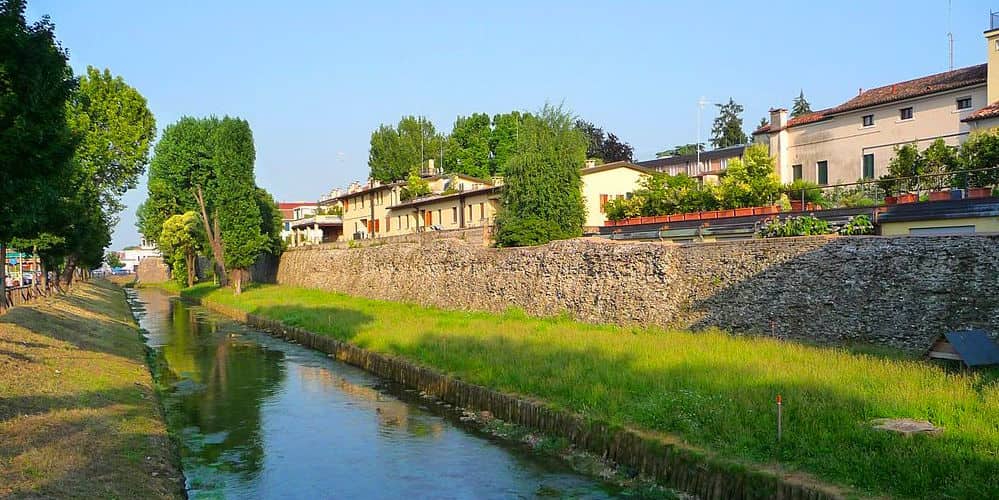
Your visit cannot end without a tour of the Treviso Walls, strolling along the tree-lined avenue that runs alongside them. Between 1509 and 1518 the Republic of Venice demolished the existing medieval walls to build a new defensive system. The three 16th-century gates, Porta Altinia, Porta Santi Quaranta and Porta San Tomaso, all depicting the Lion of Saint Mark, the symbol of the former domination of the Republic of Venice on Treviso, are still visible.
1. Bastione San Paolo (San Paolo Bastion)
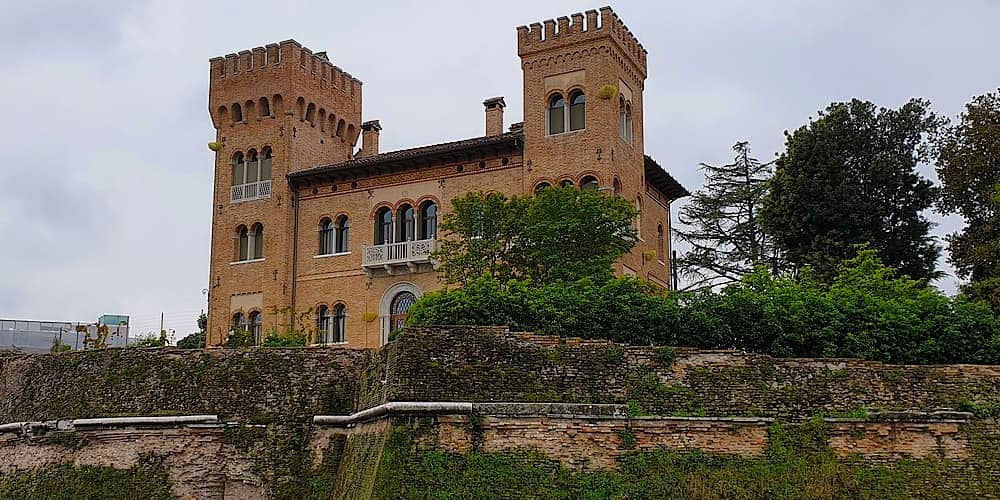
The walls were characterised by the presence of 12 bastions. Among those that are still visible today we find the Bastione San Paolo, located not far from Ponte Dante. Before ending your visit, do not miss the enchanting view of this magnificent defensive structure surrounded by the Sile.
About the author
Written on 01/05/2021


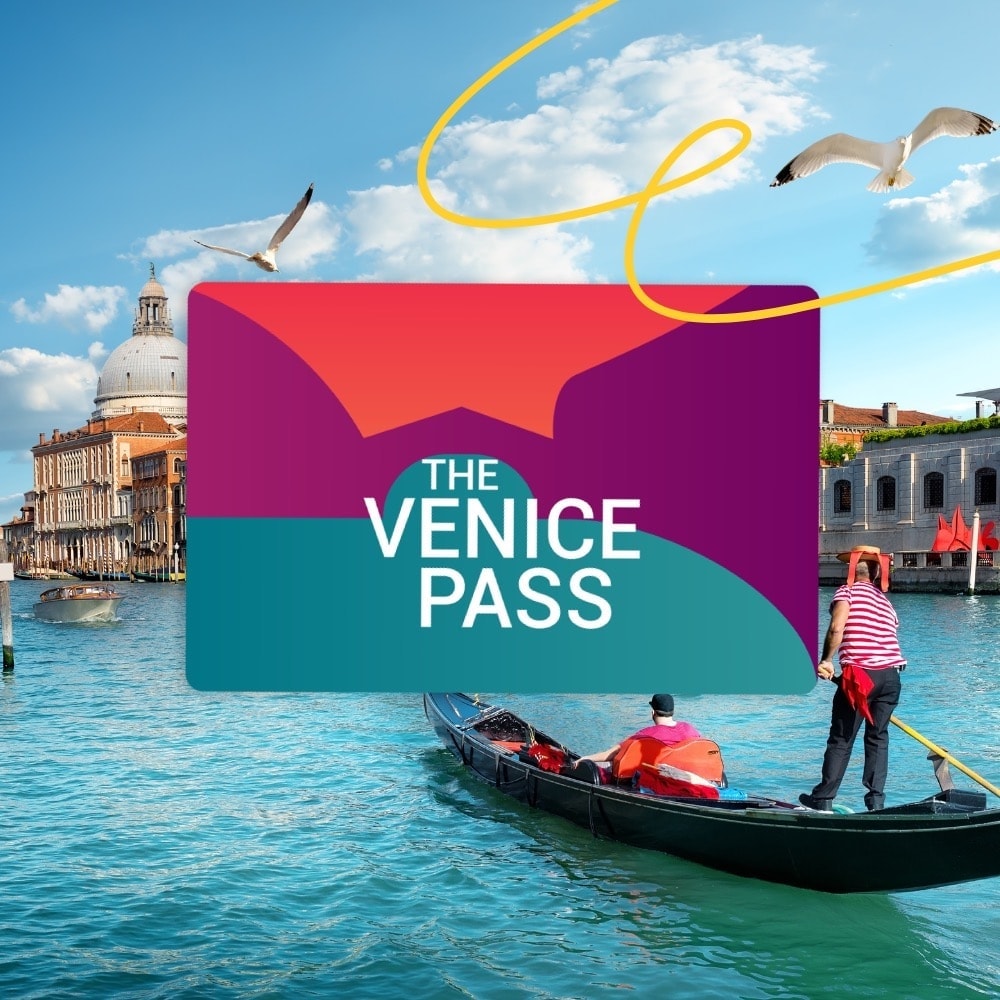
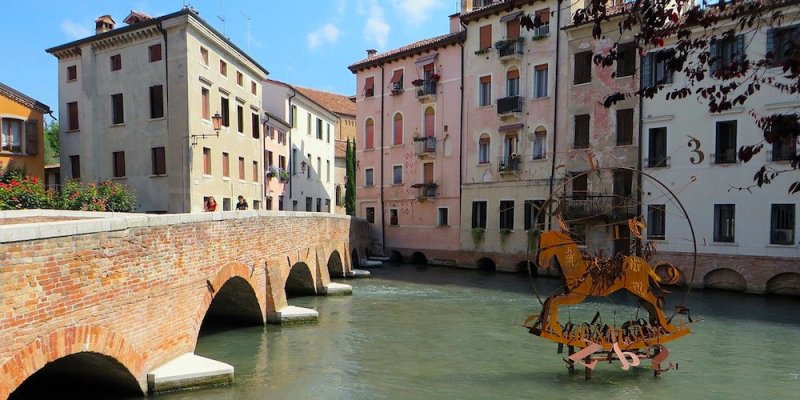
Sara Celin
Treviso, city of water that rises "where the Sile and the Cagnan meet", as recalled in the famous verse of the Divine Comedy, captivates visitors with its great charm. Despite the fact that this city is one of the less common destinations, we can assure that Treviso is one of the most fascinating places in Veneto. Let's discover together the 10 must-see places in Treviso.